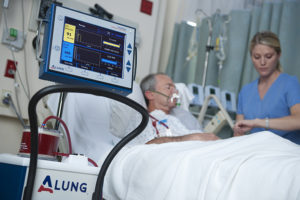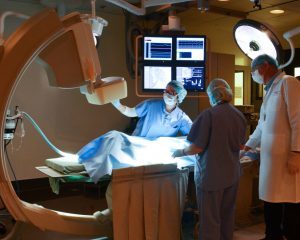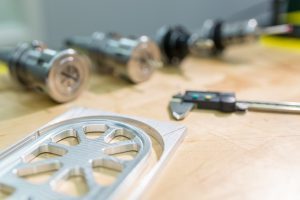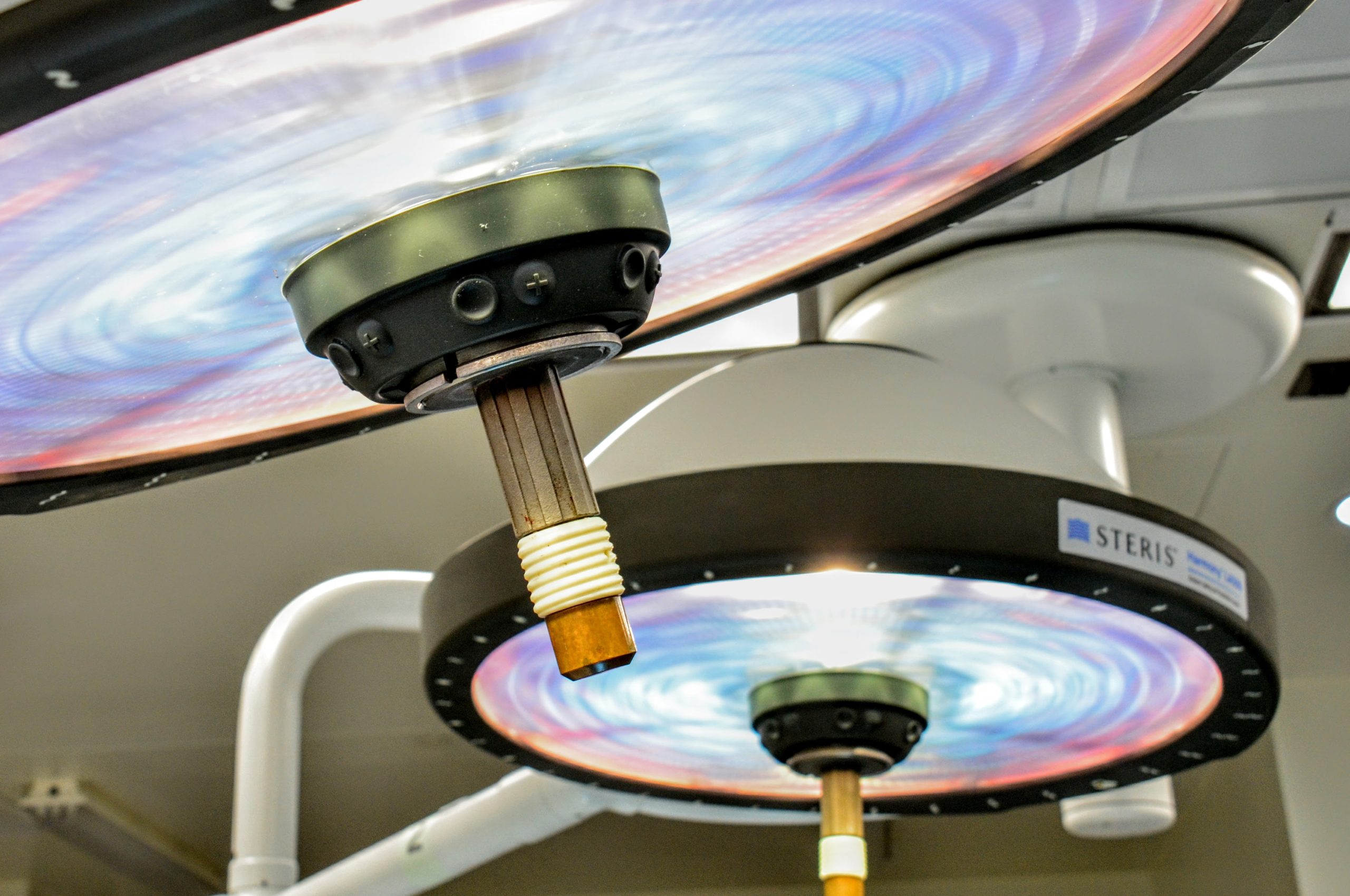GCMI and our preclinical arm also known as T3 Labs is a trusted, proven industry-leading preclinical CRO for medical devices and other medical products. We’re an AAALAC accredited facility that conducts feasibility, proof of concept, feasibility, and safety and efficacy GLP medical device testing for studies in any therapeutic area and in small and large models. Since January 2012, we have archived more than 80 GLP studies, including more than three dozen in the last two years alone, for leading medical device manufacturers of which more than 65 products have received regulatory approvals.
Awareness of changes in and the current state of the preclinical landscape can make the difference between an efficient pathway for a new medical technology’s regulatory submission or high numbers of wasted “$10,000” days.
Our Director of Scientific Affairs Evan Goldberg has more than 12 years planning, executing and reporting on preclinical studies; GLP, pilot and everything in between. If you are working on a new medical technology, be it a device, therapeutic or combination product, we encourage you to continue reading our annual Q&A on the current state of preclinical work with Evan immediately below.
Q: At the highest level, how would you describe the state of preclinical work at this moment?
A: Busy. While some of the pent up demand has cleared since Covid-19 disrupted just about everything, high levels of demand for preclinical testing services haven’t let up. A significant amount of consolidation in the industry exacerbates the situation since there are fewer places capable of doing the work.
Anyone evaluating their readiness for preclinical work should continue to plan well ahead. Lead times are still very long and we are still seeing high demand for GLP work. Get on someone’s calendar much earlier than you would have in the past. Previously innovators could get a GLP study up and running in four to six weeks. That timeline is now three to four months from initial contact, evaluation and planning to the study start.
You might also expect even longer lead times than mentioned above with our competitors. We pride ourselves on our flexibility and ability to create novel solutions for your study. This means your study could start sooner and be completed more quickly with GCMI and T3 Labs.
Smart preclinical operators are now including more raw data in their GLP final reports in case the FDA or other regulatory body requests it. Doing so reduces the risk of delay in review or approval. More sponsors are also reducing risk of high cost GLP studies that are premature by doing pilot studies that result in protocol refinements or verification and increased confidence in procedures and technologies in GLP work.
 Q: What technology types are you seeing most frequently in preclinical testing ‘mode’ in the past 12 months?
Q: What technology types are you seeing most frequently in preclinical testing ‘mode’ in the past 12 months?
A: Circulatory assist devices (CADs), including LVADs and ECMOs, comprise a huge part of our preclinical testing calendar at the moment; not just for industry, but for academic researchers and investigators as well. In addition, we’ve been seeing a lot of valve technologies like TAVRs and orthopedic products with new coatings intended to reduce the risk of infection. Surgically delivered cell and gene therapies continue to comprise a significant volume of demand for preclinical testing services as well.
Related: Preclinical Implications for Existing, and New, Circulatory Assist Devices
We did a significant amount of preclinical work on CADs in 2022 and continue to do so in 2023 with sponsors trying to increase the amount of time indicated for their device – from 7 days to 30 days – along with making them smaller, more efficient and more ‘clinician friendly’ in the interest of reducing procedure times, as Michael Sweet shared in the related post above.
New orthopedic technologies that went into a holding pattern during Covid along with the associated elective procedures are back with us now as well.
Q: How does the current state differ from 12 months ago?
A: Along with a strong return in orthopedic work as mentioned above, within the cardio realm we are doing more studies that utilize our new GE LightSpeed VCT 64-Slice scanner with cardiac gating for intraoperative needs, pre- and post-op imaging.
Q: What about the industry and your competitors? Has the consolidation ‘topped out?’
A: Not likely. It’s possible the number of qualified preclinical testing labs, especially those with robust GLP capabilities, continues to fall in the United States in the next 12 to 24 months.
Q: What has changed recently that’s likely to ‘stick?’
Compared specifically to 2022, very little has changed.
But compared to 2020 or 2021, longer lead times for both preclinical testing facilities, contract surgeons and histopathology will persist for the foreseeable future. Second, and as importantly, increased scrutiny by the FDA for GLP studies will stick. Inclusion of raw data in a GLP final report, medication tables for example, is a relatively new development. The FDA’s General Considerations for Animal Studies guidance document published in March 2023 makes reference to this topic.
More sponsors have also come to us in the past two years with FDA feedback already in-hand through the “Q-Sub” process. This is a positive development that we encourage our sponsors and clients to implement early in their technology’s development. The result of this activity means a closer relationship with the agency, a more educated client team, and a well-defined study plan, all of which have a strong likelihood of accelerating timelines.
 Regarding travel, virtual engagement works for many activities in the lead up to the launch of a GLP preclinical project, which saves time and money especially in travel. This will continue. HOWEVER, at least one closely involved team member should be onsite for the implantation or other critical start point especially for any GLP preclinical study.
Regarding travel, virtual engagement works for many activities in the lead up to the launch of a GLP preclinical project, which saves time and money especially in travel. This will continue. HOWEVER, at least one closely involved team member should be onsite for the implantation or other critical start point especially for any GLP preclinical study.
Q: What about materials and supply acquisition? Is that improving?
A: With regards to raw materials and componentry for devices, supply chain issues have certainly eased.
However, variability in availability of contrasts for angioplasty due to the closing of one overseas factory in 2022 that made 90% of the global contrast volume is a concern. For gastrointestinal technologies and studies that require liquid diets for test subjects, ensure those products’ availability and delivery times to the preclinical testing facility.
Q: What should innovators, regardless of size or state, watch out for when soliciting bids from preclinical testing labs?
 A: Beyond planning, several studies in the past 12 months have had to be pushed back because devices provided by the contract manufacturing organization, or CMO, either weren’t ready or not made appropriately. It’s not just preclinical or histology labs that are having a hard time keeping up, manufacturers are as well.
A: Beyond planning, several studies in the past 12 months have had to be pushed back because devices provided by the contract manufacturing organization, or CMO, either weren’t ready or not made appropriately. It’s not just preclinical or histology labs that are having a hard time keeping up, manufacturers are as well.
Production quality and volume for contract manufacturing organizations or CMOs is a problem. Allow for potential delays in test article acquisition and do not expect the first batch to be delivered ‘just in time’ or ‘just right’ for the planned study start, especially for GLP preclinical studies.
Keep the end in mind, not simply how quickly you can start. Does the lab have the expertise you need in a therapeutic area, in your surgical procedure, are they AAALAC-accredited and GLP-compliant? Do they have a solid FDA track record or have they received 483s or warning letters recently? Those are critical questions to ask of any preclinical CRO especially for GLP studies.
Our goal is to get you through the FDA or other regulatory body process with no questions asked. That accomplishment has enormous capability to accelerate your commercialization timeline.
Q: If someone is preparing for preclinical work in the next 12 months, what are the most important things to know?
A: In 2022, fewer clients were familiar with the state of the FDA Q-Sub process. They would submit a poorly informed protocol to the FDA that returned to them with changes that significantly delayed the study’s start.
In the past 12 months, more sponsors and clients are coming to us with FDA feedback already in hand and a better idea of what the study protocol and end points should look like. This always makes the pathway to a solid GLP study and subsequent regulatory submission more efficient.
Q: What’s the one or two things readers should take away from this about the state of preclinical testing in 2023?
A: Be realistic about your timeline and plan well in advance every step of the process including FDA engagement for protocol and end points development, how your CMO will produce and deliver your device and get on both the preclinical and histopathology labs’ radars and schedules early.
Listen to your preclinical lab’s faculty closely when it comes to the potential for adverse events and the risk level of the procedure required for your technology. Spending more upfront has significant potential to offset the risk of significant timeline disruption or regulatory submission delay.
Clients and sponsors always want preclinical studies to be cheap, fast and high quality. But you can only have one or two of those three. Going with the cheapest and fastest creates a significant risk that your FDA submission will not meet an established timeline due to insufficient data the FDA will want or demand. Those data may include images of each histopathology slide in the histopathology report or raw data included within the GLP preclinical final report.
If a preclinical CRO or histopathology lab says they can do the work faster and quicker than their competitors, make sure everything you need to have included is indeed included. And if you’re not sure what those elements are, ask us!
Why GCMI and T3 Labs for your preclinical testing and bioskills training needs?
- Flexibility: We work beyond the bankers hours because we know time is of the essence, deadlines must be met and your innovation is not your surgeons’ sole concern.
- Collaborative accountability: We are collaborative and accountable. We are committed to meeting your needs on your timeline and on your budget.
- Quality, compliance and accreditation: GCMI is committed to meeting customer needs and regulatory requirements. Our AAALAC accreditation and GLP experience validate these claims.
- Scientific acumen: We won’t turn your project away because it’s too hard, or because we haven’t done it before. We want to work with you to address real challenges.
- Commitment to value: Our response to your request for preclinical work may not be the lowest bottom line price, but all preclinical programs and RFPs are not created equal.
In the words of a few of those preclinical customers:
- “Designing and managing the logistic demands of a large animal study is complex and requires much more knowledge than a bench scientist’s,” he said. “That’s where the team at T3 Labs has been exceptional. They fill in all of the translational gaps for our requirements with very high levels of proficiency. The ability to execute cardiac cath lab preclinical programs combined with electrophysiology is exceedingly rare. T3 Labs has the infrastructure and expertise to make it happen.” – Hee Cheol Cho, PhD, Urowsky-Sahr Scholar in Pediatric Bioengineering, Associate Professor, Departments of Biomedical Engineering and Pediatrics at Emory and Georgia Tech
- “A good preclinical partner must be able to adapt to the needs, schedule and budget for a specific project. T3 Labs, now part of GCMI, has been an outstanding partner in supporting ALung throughout many preclinical studies. Preclinical work is always filled with unexpected outcomes – some good, some bad. Having a trusted preclinical partner that has the experience, expertise, and flexibility to work with your specific product, team, timeline and budget is of the utmost importance.” – Jeremy Kimmel, PhD, Vice President of New Technologies for ALung
- “Our experience with T3 Labs for the CardioMEMS device created new knowledge and refinements to the device that resulted in a product that was highly mature at the time we started our clinical trials in humans.” – Jason White, Senior Director of Product Development at St. Jude Medical
Get in touch
If you are evaluating your circulatory or ventricular assist technologies readiness for preclinical, or if you have an idea or technology earlier in its pathway that may need regulatory pathway evaluation, IP or freedom to operate assessment or other design and development concern, it’s never too early to get in touch.
Contact us via the form below today.
